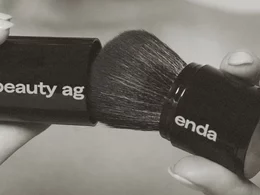Shoulder pain is a nuisance that you shouldn’t have to deal with — especially when you are trying your best to take care of your body with exercise. Shoulder pain can manifest itself in many different ways, and the general sensations of pain can vary. Here we’ll outline some of the reasons behind this pain, and some exercises you can do to ease it.
The shoulder, or glenohumeral, joint is comprised of two bone surfaces, the scapula (shoulder blade) and humerus (upper arm). These two bones together naturally have a large range of motion between one other. Since this joint has many degrees of freedom and is often times considered “too” wobbly, you might visualize the shoulder as a golf ball on a tee.
Because of the lack of stability between these two joints, the muscles that stabilize this ball-and-socket joint have to work double time to keep the shoulder stable. When these muscles are required to stabilize for longer periods of time than they are used to, they end up getting fatigued, which could lead to the non-contractile shoulder anatomy having to create stability in this joint.
Muscles are your body’s active shock absorbers and should be responsible for stabilization of all joints. When these muscles break down over time due to poor posture, lack of use, or even fatigue from overuse, the body then relies on passive structures such as cartilage, tendons, ligaments, and fascia to maintain a position of stability. Since tendons, ligaments, and cartilage have no ability to contract and shorten, these structures end up get damaged over time.
Knowing that improper scapular and humeral position and posture can negatively impact the function of your shoulder in the long term, here are some easy activities that you can do to counteract the effects of shoulder dysfunction:
Foam Rolling Lats and Thoracic Spine

Place a foam roll horizontally on the ground behind where you are sitting. Give yourself a hug, wrapping your hands across your chest and holding onto the back of both shoulders. Lay your ribcage down on the foam roll, allowing your spine to be wedged open by the curve. It may be a little sore, but will ultimately yield massive results for your overall flexibility. Make sure you are targeting the middle of your back and not your neck or lower back.
Trigger Point Therapy for Posterior Rotator Cuff

Using a small Lacrosse ball, find the tender spots in the back of your shoulder blade near your armpit. The muscles that control the internal and external rotation of your arm are near the bony ridge of your shoulder blade. You can either use a wall or the ground to find the tender area and roll on the ball or move your arm while holding the pressure.
Stabilize your Shoulder Girdle

Now that you have effectively “released” the muscles that are causing increased tightness and tenderness, you need to activate the ones that work to stabilize your shoulder. With a loop Theraband around your wrists, pull your shoulder blades together and raise your arms overhead. Focus on keeping tension in the back of your shoulders and not through the front of the shoulder joint.
In addition to trying these moves on your own, there are multiple options at the Village that can assist with easing shoulder pain such as Pilates, foam rolling and massage. If you’re experiencing continued pain, speak with a specialist at the Village to see what options might be best to help release tight muscles and find relief.










